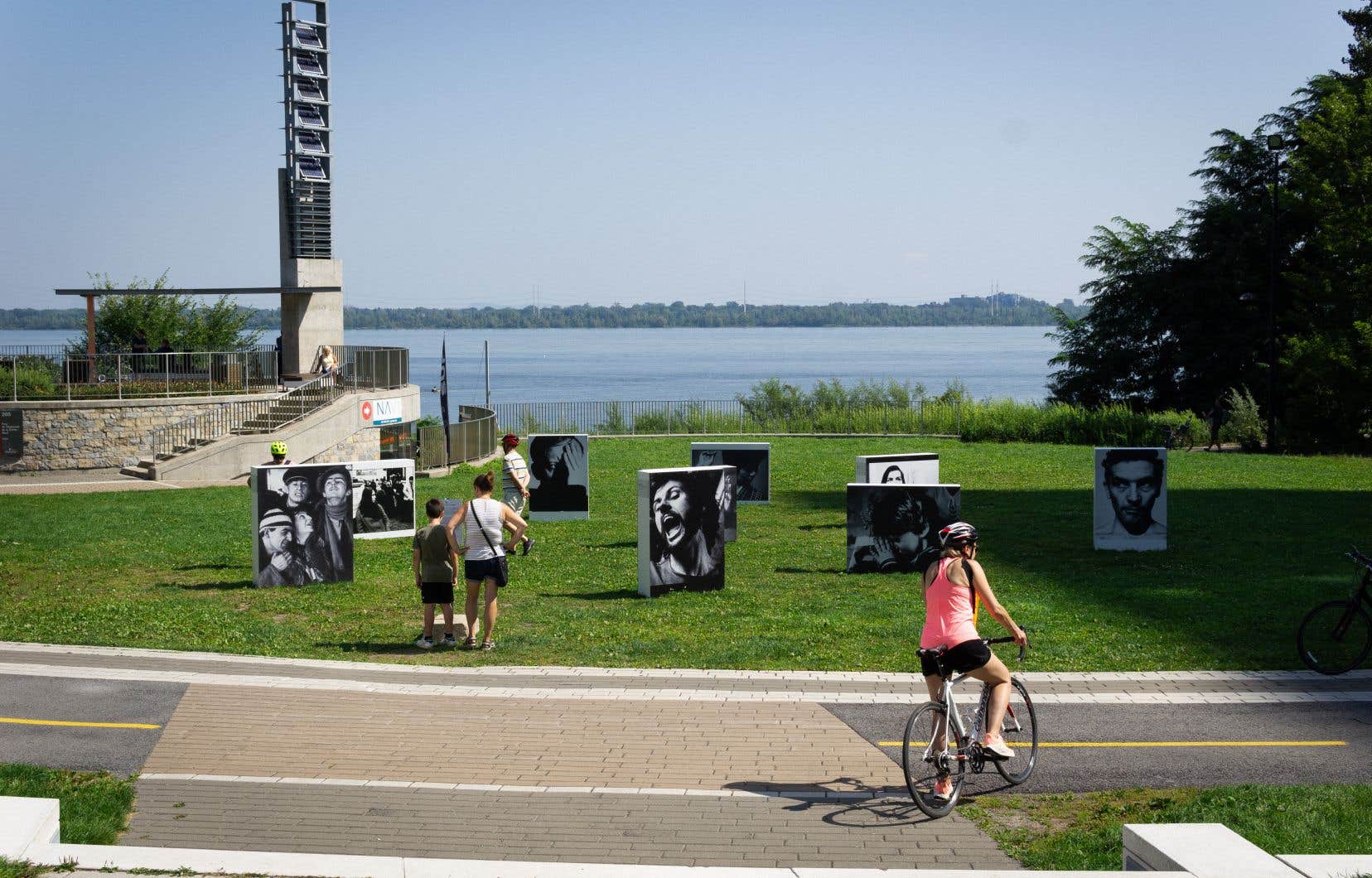Should we introduce John Max (1936-2011), who was one of the greatest Canadian photographers of his generation? Unfortunately, the Montreal public has had little opportunity to see his work in recent years. We will remember, all the same, at the La Castiglione gallery, in 2017, the presentation of 12 images from his most famous series, entitled Open Passportexhibited for the first time in 1972.
These days, art historian Michel Hardy-Vallée allows us to see, in Nuns’ Island, in a park, a selection of 18 images taken by John Max between the end of the 1950s and the beginning of the 1980s. On display at the 13e edition of the Rencontres de la Photographie en Gaspésie, in 2022, these photos are mounted on “Dibond, a laminated aluminum support intended for commercial uses which resists abrasion and even maritime storms! » explains the commissioner.
The visitor will find exceptional images there, including the very Christ-like one of the artist Armand Vaillancourt. You will also see remarkable images by the choreographer Suzanne Rivest as well as the painter Rita Letendre, the photographer, graphic designer and poster artist Vittorio Fiorucci, the photographer Marc-André Gagné…
This is a photographic art that Hardy-Vallée aptly describes as “theatrical”. “Humans are presented as characters: the style of lighting and the treatment of contrasts on the prints often give the impression that they are on a stage. The subjects are not simply “posed” to represent themselves. A classic portrait is an image of a person who says “I am that person”. In John Max’s photos, people are often depicted in a way that suggests they are instead constructing a persona for the camera. Alfred Pellan’s contact sheet is an excellent example that shows the process. » The curator has also decided to show this contact sheet in full in one of the exhibition panels.
A classic portrait is an image of a person who says “I am that person”. In John Max’s photos, people are often depicted in a way that suggests they are instead constructing a persona for the camera.
Hardy-Vallée did not want to exhibit again Open Passport, because this series, of which “you have to see the rest of the 161 images to fully understand it”, is “like a novel”. Instead, he “started the conversation about Max on a new footing” by “going back to the beginning,” when “he established his name.” He adds: “I decided to concentrate on the portrait and not address the dimension of the sequence, given the space constraints. So I went looking for strong images, but also images that had historical value. My own understanding of the history of art in Quebec was increased tenfold by going through Max’s archives. So I wanted to look for names that are important, but sometimes forgotten, or that show the need for rediscovery. Suzanne Meloche is an example: without Anaïs Barbeau-Lavalette’s novel or Manon Barbeau’s film, she is an important person who would have been forgotten. For this same reason, I included Louky Bersianik, Jean Letarte, Suzanne Rivest, Arthur Lipsett and Guy Borremans. »
Hardy-Vallée will continue his in-depth work on John Max. “I have two book projects in development to make his work better known. The first is a photographic book, in French, which presents a selection of his corpus of images of Montreal artists for the period 1956-1964. I hope to complete it by next year. The second is a monograph, in English, on behalf of McGill-Queen’s University Press. I try to show how Max used photography as a support to forge links of belonging with different backgrounds and communities. Tangentially, I am also preparing a scientific article on the collective exhibition Photography 57, the first in which Max participated, an exhibition which, in 1957, brought together several artists, including Jean-Paul Mousseau, Michel Brault and Gordon Webber. »
